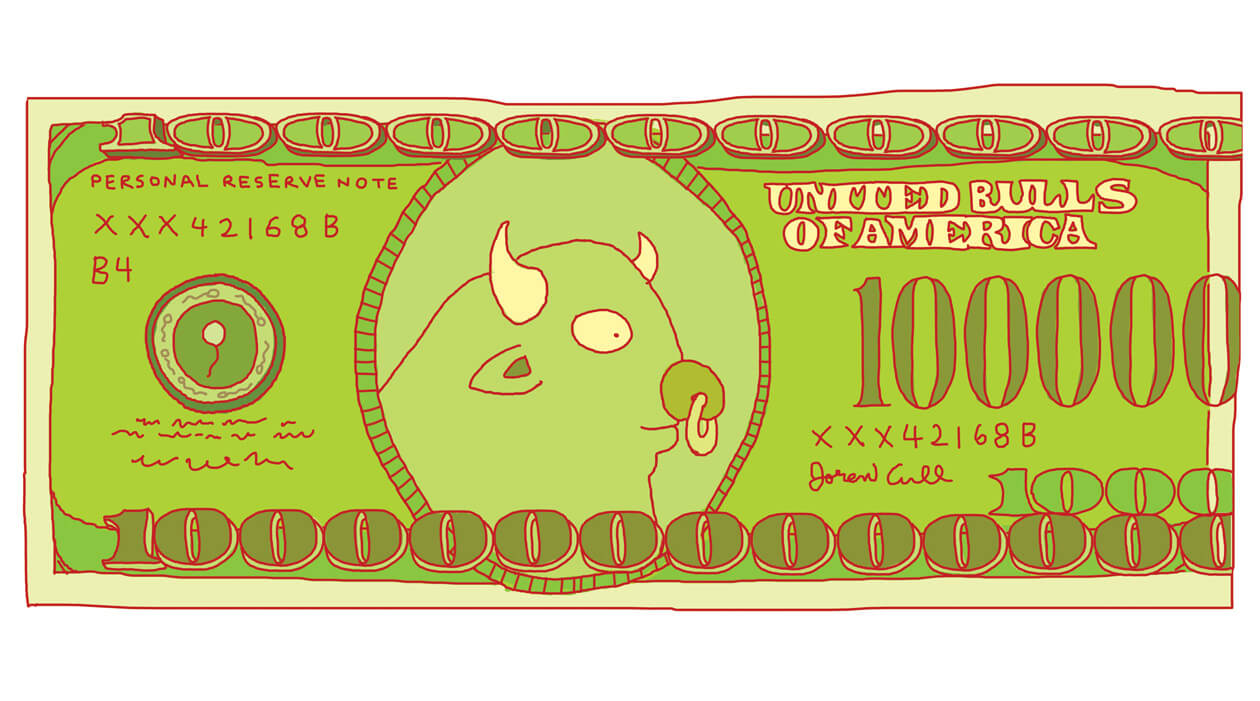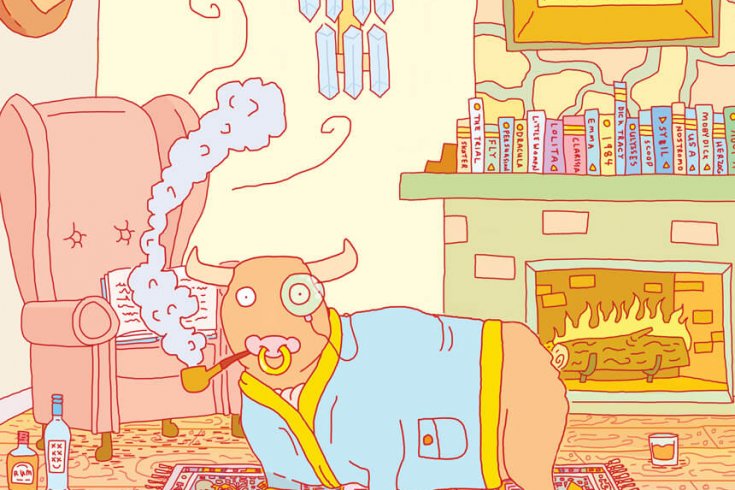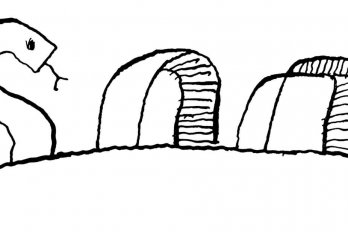In april 2015, thieves struck a Minnesota farm in a brazen daytime heist. They took only one item, a cryogenic canister the size of a milk jug. Contents: frozen bull semen. Street value: $70,000 (US). Was it some kind of prank? Someone indulging in an obscure fetish? Hang on, how much?
Nine months later, it happened again. Four canisters worth $50,000 were stolen from a truck in California. It was presumed that the thieves had no clue what they’d run off with. But that’s unlikely. Frozen bull sperm, after all, is the linchpin of an entire industry: milk production. In 2015, Canada’s roughly 12,000 dairy farms produced nearly 82 million hectolitres of milk worth an estimated $6 billion. To get milk, you need cows. To get cows, you need bulls. What you don’t need? The birds and the bees. Artificial insemination is the norm. Therefore, high-quality bull semen is like white gold. And some of the best of the best is made in Canada, a world leader in the trade. Smart farmers would do well to lock it up.
Last January, during a visit to the Baes family farm, near Stratford, Ontario, I saw a canister like the ones that were nicked in Minnesota and California. Its top flips off. Inside are long steel skewers, at the ends of which are plastic vials—resembling tiny drinking-box straws—immersed in liquid nitrogen. Each straw contains about a quarter of a millilitre of bull semen, the equivalent of four drops from an eardropper. Christine Baes shows me a plastic cup filled with dozens of used straws: red, white, and blue caps spread out in a starburst pattern. Each one represents an attempt to impregnate a cow. I’m invited to hold one. I decline.
Christine grew up on this farm, which is home to more than 150 dairy cattle. To my city-trained eyes, the cattle seem profoundly indifferent. They lie down and chew and grunt, filling the barn air with wet bovine breath. Christine helps her family out on weekends. The rest of the time, she’s a quantitative geneticist at the University of Guelph, Canada’s top agricultural research facility, which is about an hour’s drive east. In 2008, she received a PhD in animal science, and she now studies the role of genetics and genomics in livestock breeding.
On the farm, the cows never see a live, snorting bull. “What you do,” Christine says, “is go in the rectum, feel around and find the cervix—it’s normally the size of a small fist.” She holds up her fist helpfully. “Then, with one hand, hold the cervix, and with the other, feed the catheter through the cervix and deposit the semen so it’s almost in the uterus.” That’s how cows are made now, and how every cow here—and most of the cows in Canada for the last fifty years—came to be.
Semen is delivered by an agent. In Canada, many of these agents come from Semex, based in Guelph, or one of its partner companies, such as EastGen (which the Baes family uses). Semex collects, processes, markets, trades, and (for lack of a better term) installs bull semen in cows around the world. It also breeds superbulls. Their past roster includes sires such as Aerostar, Leader, Inspiration, Talent, Buckeye, and Manifold: farmers memorize and recite these names, much as I once did the names of players from the Original Six. Each of these bulls has produced over a million doses of semen in his lifetime. These bulls are busy.
Cattle breeding used to be a matter of trial and error. Bull mounts cow—maybe the process “takes,” maybe not. Then, in 1899, the Russians pioneered artificial insemination. I admit it hadn’t occurred to me, until Christine calmly explained it, that a cow produces no milk unless she’s recently given birth, which is why it’s important to impregnate a cow as often as she can physically bear it—say, about once a year. A cow will milk for 305 days, rest for sixty, and then be up to bat again. Artificial insemination is not only more efficient than waiting for a bull to get his intentions straight, but also less expensive in the long run. Better still, with available technology, a farmer can select the kind of offspring he wants. Genetic mapping, the kind of work Christine does at Guelph, can pinpoint desired traits in the makeup of the bull. Natural breeding is unpredictable. Artificial breeding isn’t.
“You look at his genome,” says Christine, meaning the bull’s genetic blueprint. “You take a hair sample or a spit sample or a snot sample and send it to a lab.” Every cell contains base pairs of DNA, commonly expressed as a combination of four letters (A, G, C, and T). There are approximately 3 billion base pairs in cow DNA, about the same number as in humans. “These letters are exactly the same in about 99.7 percent of all Holstein cattle—except for the part that’s left over,” she says. “So what can happen is, you’ve got a region where the genome is identical, identical, identical, and then boom, at position 7,473 of chromosome seven, one animal has a T and another animal has an A, and that difference can make a difference in the phenotype.”
Phenotype: the traits in a creature that you can see with your eyes, touch with your hands, or measure with a cup. Researchers have been able to identify the genes responsible for certain traits: milk yield, fat yield, protein yield, breeding fitness, good limbs that will allow for long periods of standing in the milking pen, rump size (a fertility indicator), and, crucially, the ability to resist infection. Semex markets some semen as Immunity Plus, meaning that the calves it produces will have a higher resistance to certain diseases. It markets some semen as Robot Ready, meaning that a statistically significant number of offspring will be born with teats conducive to milking by machines (which don’t require human hands to guide them: they are hooked up to the udder using lasers).
You can pick this stuff out of catalogues: give me a Robot Ready, Immunity Plus cocktail. We are now well past Green Acres.

Christine’s uncle Robert runs the adjacent farm. He came to Canada in 1959 from Belgium “with absolutely nothing,” he says, and eventually earned enough to buy land and livestock. He’s never owned a bull. He buys EastGen semen from a catalogue. It’s delivered to his barn door by an agent, like a purchase from Amazon. The agent also does the physical insemination. Each of Robert’s cows wears a radio collar with a small box attached. The box is a motion detector. When a cow is in heat, her activity increases: she fusses, jumps around. The motion detector then sends a wireless signal to a display in Robert’s office, indicating the cow is ready for action.
I ask him what it costs to get door-to-door semen. “Well,” he says, “I got the bill today for all the semen we bought in December. About $3,000—fifty doses conventional, fifty doses sexed semen.” So between $25 and $35 a shot. Sexed semen is processed by the supplier to remove sperm cells that carry the Y chromosome, so that there’s a better chance the impregnated cow will have female offspring—which is what Robert wants. Females grow up to be milk producers. Male offspring aren’t much use to him and will be sold for veal. Better not to have any.
For anyone who wants to see semen collected at the source, YouTube offers a number of options. The bull is brought into a pen and introduced to a “phantom” cow—a leather-clad dummy that looks like the pommel horse in a high-school gym—or to a tame, castrated bull. The bull that undergoes the procedure usually has a good idea of what’s about to happen. Sometimes the familiar sight of the “collector”—the human handler who extracts the goods—is enough to trigger a reflex. A bull erection can be two feet long. After he has mounted the phantom, or his castrated friend, the bull ejaculates into an artificial vagina that’s shaped like the handle of a lightsaber and has been warmed to slightly above body temperature. If all goes well, it’s over pretty quickly.
One ejaculation produces up to five hundred straws—at a quarter of a millilitre each, that equals 125 millilitres, or about half a cup. For a bull with a proven pedigree such as the late Braedale Goldwyn, an undisputed star at Semex (where he reportedly enjoyed the services of a chiropractor and massage therapist), the unit cost for a straw’s worth was reportedly $100 in 2006. This means that Goldwyn, before his death in 2008, produced money shots worth at least $50,000 each. With collections scheduled for an average of three times per week, that’s a potential monthly gross of $600,000. Then again, that’s the top end of the scale. Lottomax, another Semex bull, sells at about $50 a dose, and Johnny Cash, at the more affordable end, costs around $24 per straw.
Still, it’s no small racket. According to Agriculture and Agri-Food Canada, Canadian companies exported $111 million worth of dairy semen in 2015, up from $85 million just four years before that. The United States bought $40 million of Canadian sperm last year, nearly twice as much as it did in 2010, and 26 percent more than in 2013.
According to Peter Sullivan, a research scientist at the Canadian Dairy Network—an industry-funded outfit that compiles data on dairy cattle in Canada and monitors genetic developments—the country has a solid reputation for semen. “Over the last decade,” he says, “we were a world leader by building new databases and introducing genetic evaluations for many new traits.” In short, Canada keeps excellent records. From there, the matter gets moderately existential. “Ultimately, we want happy cattle,” says Sullivan. “Although we don’t have a happiness index, if they’re not happy, they’re not going to be performing well.”
I ask if it’s conceivable that one day a happiness component will be spotted in the bovine genome, trademarked and marketed as, say, HappyCowTM, and made available for purchase by way of a mouse-click in the EastGen online sperm catalogue. “Pretty much anything’s conceivable,” he says.
Robert Bae’s cattle sleep on water-filled pads. While not exactly Vegas-style, they are essentially waterbeds, albeit soaked and coated in manure and wet straw. Robert, who is seventy-nine years old, jumps on one by way of demonstration. The barn is open-concept: cows are able to wander freely. The idea is that because they’re more comfortable, they’ll be more productive than they would be if they were tied up or kept in cell-like pens. They’re also less likely to develop lesions if they sleep on waterbeds. And a Norwegian study suggests that cows with a “softer stall base” can produce up to 500 litres more milk each year than their sisters who sleep on the hard floor.
But there is a problem with the open-concept arrangement. Holstein cattle—the breed most commonly used by Canadian milk producers—are born with horn buds. If you let horned cattle wander en masse in an open-concept barn, they could gore one another. So on the Baes farms, a veterinarian will put young cattle under local anaesthetic and burn off the horns. Even under those conditions, the process is invasive and traumatic, and one can assume it has a detrimental effect on the “happiness index.”
Enter the sperm people. Some companies market semen that is more likely to produce “polled” cattle, which don’t have horns. The problem: compared to those bred for volume, polled cattle are not necessarily productive milkers. Gain one thing, lose another. Farmers want milk yield. And so the burning goes on.
So what about genetic editing? The technology is there. One type, called CRISPR/Cas9, involves altering or replacing genes through a chemical process. In other words, by genetically modifying sperm, we can breed cattle without horns with no loss in milk production. “Horns are caused by ten 112 base pairs,” explains Christine. “Take out these ten 112 bases and insert 212 base pairs, and the cow doesn’t have horns. Now, what do you do if you have your 1 million dairy cows in Canada, 94 percent of them Holstein, and they all have to be de-horned—what is the ethically correct thing to do?”
“Do you produce hornless cattle that are genetically identical,” she says, “so you don’t lose the genetic advantage? Or do you continue to burn off the horns of those dairy cattle?”
“So what’s the answer?” I say.
“I don’t know.”
“Well, you have an opinion.”
“I do have an opinion,” she says. “The problem with technology like this is where do you start and where do you stop?”
Health Canada itself is on the fence. In an email, a departmental spokesperson tells me that any food derived from genetically modified animals is subject to federal regulation, but that nothing in the existing rules would prohibit gene editing in food animals. However, when marketing the food, producers have to prove it is safe for consumption—it must not produce new toxins or allergic reactions in consumers. In other words, the Government of Canada doesn’t necessarily disapprove of the technology; it simply prefers not to talk about it. Sullivan, of the Dairy Network, is more direct. “It’s not something I’m personally favourable towards,” he says. “I think there’s a limit to things we’re supposed to intervene in.”
In the meantime, semen companies are tailoring the genetics of dairy cows, not through CRISPR technology (which they, too, prefer not to talk about), but through supply and demand: identifying traits that appeal to farmers and selling semen that produces those traits. Eventually, you end up with more and more cows bred from the straws of fewer and fewer bulls.
Christine did the math for me. On paper, the millions of Holstein dairy cows in the world are drawn from about 100 ancestors. That means the marketplace hasn’t diversified the ecosystem but instead delivered consistency, reliability, and a gene pool as deep as a pie tin of rainwater.
The irony is that, while the genetics are cutting-edge, the process remains low-tech: straddling nothing but a pommel horse, a bull can produce more than 7 million dollars worth of export value in a single year. He will never see his offspring or the cows with whom he has mated. Keeping the happiness index in mind, we can only hope he’s having a good time.
This appeared in the October 2016 issue under the headline “Money Shot.”




